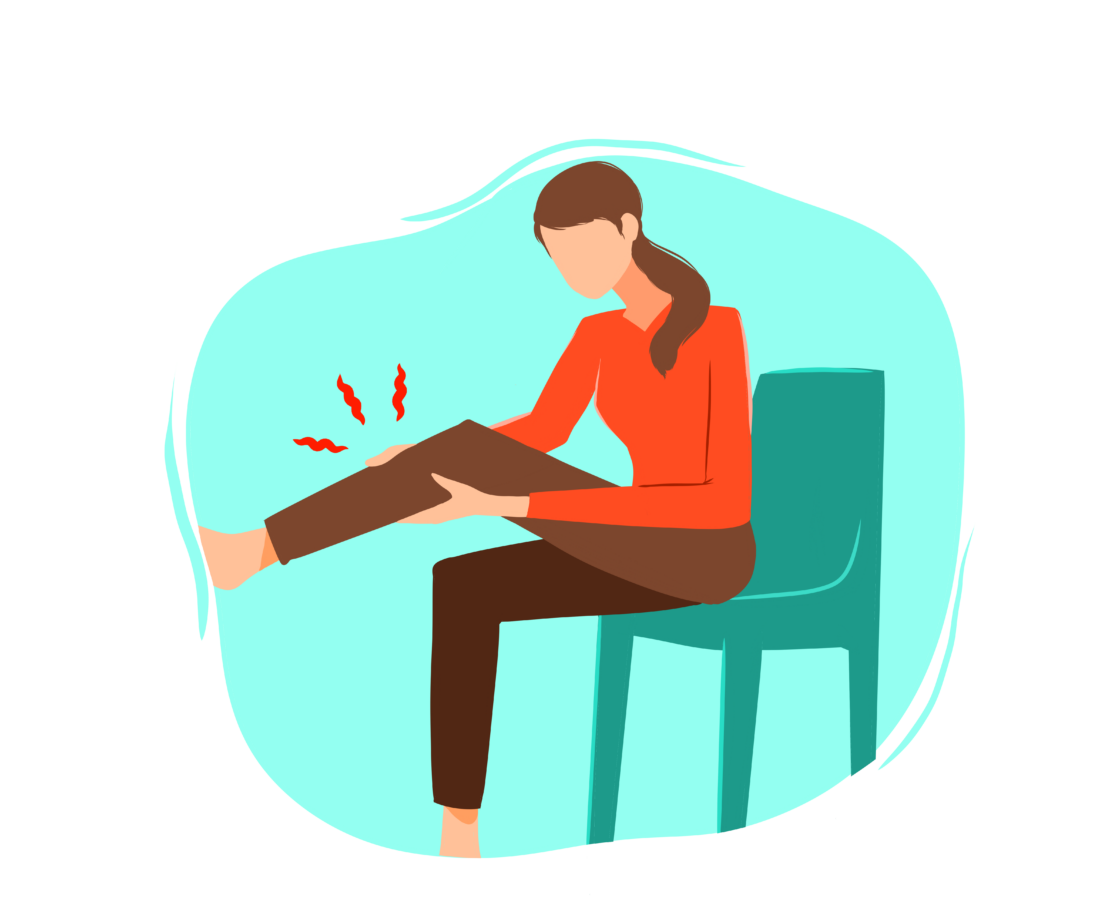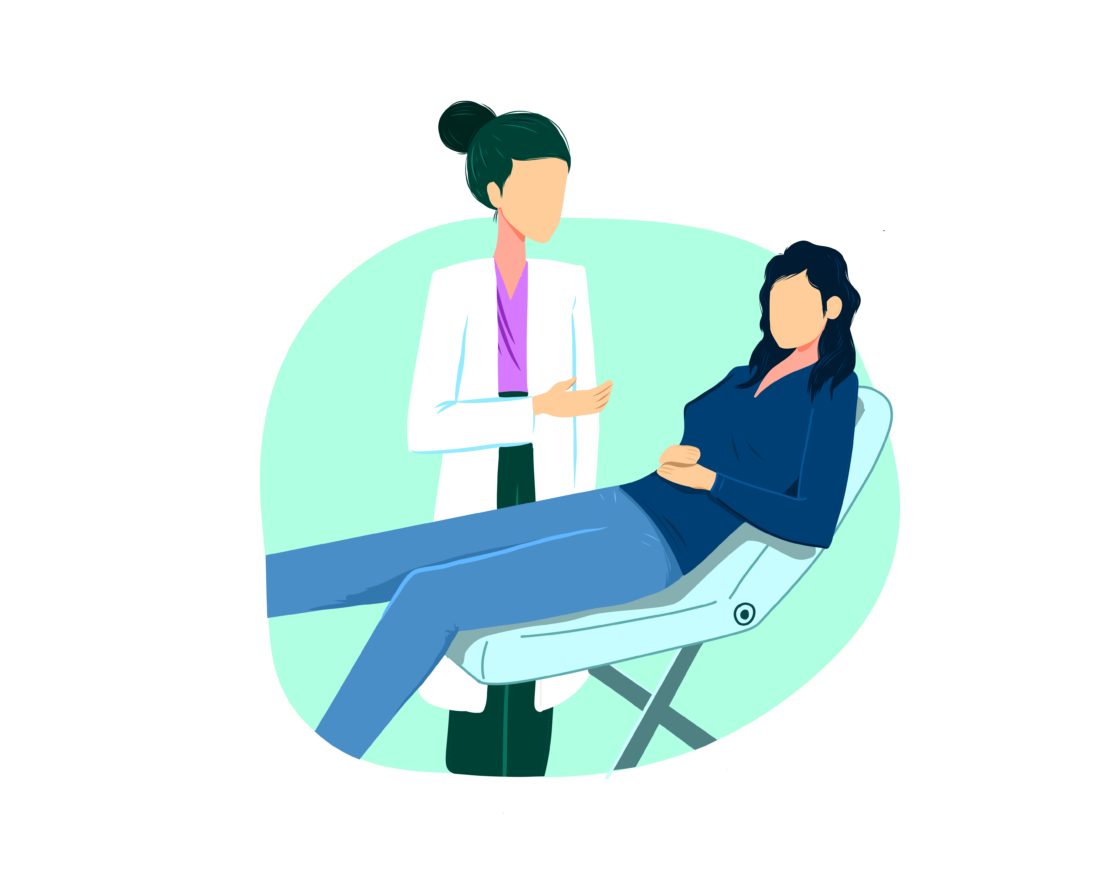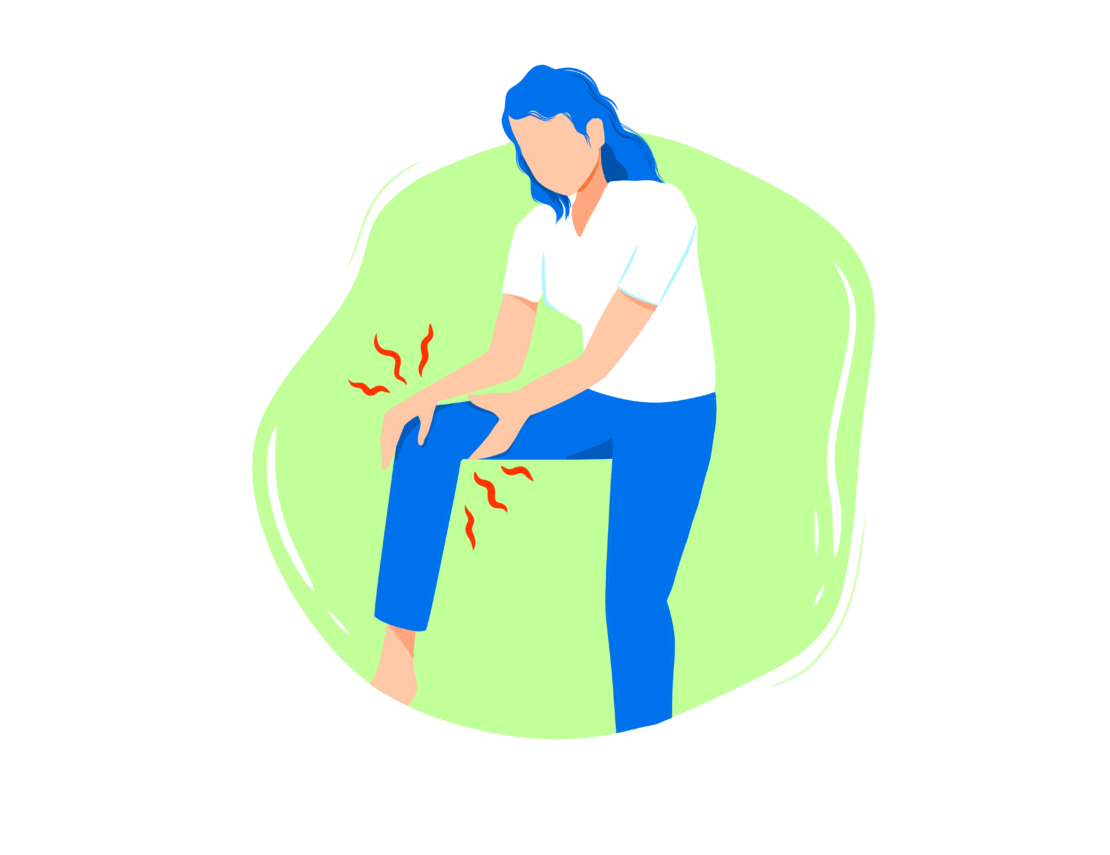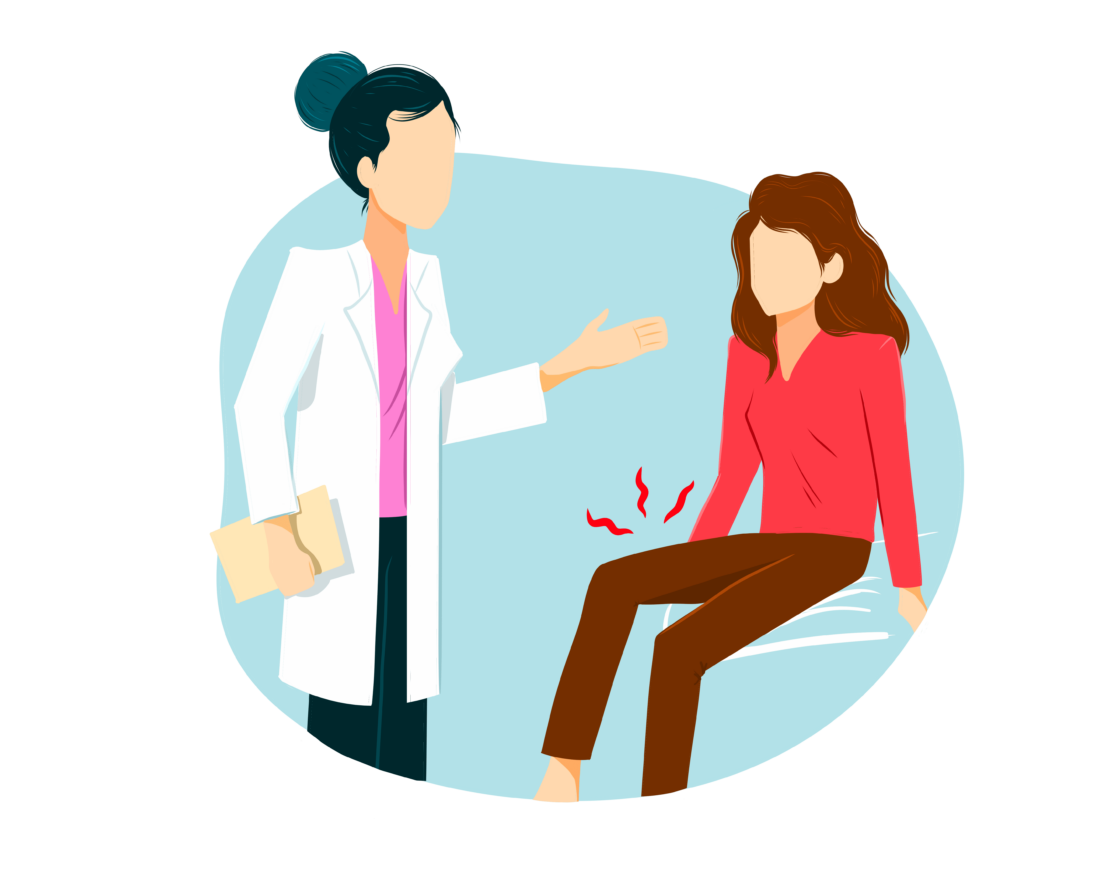Painful leg aches during menopause is caused by the decline in oestrogen which affects the joints, tissues, ligaments, and muscles of your body. Major characteristics of this symptom are leg swelling, cramps, and sharp pains on joints.
Diminishing levels of oestrogen could lead to a lot of adverse effects which negatively affects your health. When approaching middle-age, it would be best to have a regular health check and specialised treatment if needed.
However, there are practical methods to manage these menopause symptoms and ensure they don’t get serious.
How Achy Leg Pains Are Related to Menopause?
Leg muscle aches and pains in the legs are common symptoms experienced by women during menopause. These symptoms, known as musculoskeletal symptoms, are characterised by stiffness, pain, and limited range of motion. You may feel these discomforts not only in your legs but also in areas such as your shoulders, elbows, knees, and other joints and muscles throughout your body.
During the early stages of menopause, middle-aged women often experience a significant occurrence of leg pain, which can be attributed to the decline in oestrogen levels. This hormonal change affects the overall health of muscles and bones, leading to discomfort in the legs.
A group of researchers from the Collaborative Group for Research of the Climacteric in Latin America found that these joint and muscle aches are also associated with other menopausal symptoms, especially vasomotor symptoms (such as hot flushes and night sweats).
According to a study conducted by Manipal College of Medical Sciences involving 729 women, it was found that 69.7% of these women experience hot flushes and night sweats, while 68.6% of them report joint and muscular discomfort.
Therefore, it’s likely a strong correlation exists between experiencing hot flashes, and the likelihood of also experiencing leg aches and pains.
However, it is important to note that various factors, such as hormone replacement therapy (HRT), lifestyle choices, and exercise, can play a role in preventing age-related decline in the body.
In the upcoming sections, we will delve deeper into the causes and potential treatment options for muscle and joint aches, providing a comprehensive understanding of this topic.

Why Menopause is Causing Painful Legs Aches?

Leg muscle pains are closely linked to hormonal changes during menopause. As menopause progresses, there is a decline in progesterone and testosterone levels, as well as significant variations and a sharp drop in oestrogen levels.
This deficiency of oestrogen can lead to issues with joints and connective tissue, which are responsible for supporting and connecting your bone structure. Consequently, experiencing overall leg pains, aches, and stiffness can be a consequence of these hormonal fluctuations. It is important to recognise that hormone levels in women undergo significant changes during the perimenopause and menopause phases.
Maintaining adequate oestrogen levels is crucial for menopausal women in order to prevent leg muscle aches. Oestrogen plays a significant role in pain perception, joint health, and managing inflammation. When oestrogen levels decline during menopause, several effects come into play:
- Natural painkillers like endorphins and enkephalins are not properly regulated by the body, and as a result, they are released in lower amounts. Increased pain sensitivity may result from this.
- The connective tissue connecting bones and joints, cartilage, can become dehydrated and get less oxygen if oestrogen levels are reduced. This may result in more discomfort and a chance of developing arthritis.
- Due to oestrogen’s anti-inflammatory effects on the body, lower oestrogen levels are associated with higher levels of inflammation and higher rates of arthritis.
When Should I Be Concerned About Night Sweats?
Oestrogen and testosterone have vital roles in preserving bone development, promoting muscle growth, providing relief from inflammation, and safeguarding cartilage. In the following sections, we will delve deeper into the functions and significance of these hormones.
Oestrogen
A systematic review by the University of California regarding “Effect of Oestrogen on Musculoskeletal Performance and Injury Risk” has shown that oestrogen raises the collagen content of connective tissues and increases muscle mass and strength in these other musculoskeletal tissues.
But while oestrogen increases function in bone and muscle, it decreases stiffness in tendons and ligaments, which has a direct impact on performance and injury rates.
Testosterone
Testosterone causes skeletal muscle hypertrophy through a variety of pathways; these changes in skeletal muscle result in increased muscle strength and leg power.
In fact, a study carried out by The University of Melbourne took a closer look at the effects of testosterone deprivation. It found that when testosterone levels are low, it primarily affects the lower limb muscular function.
This means that the leg muscles responsible for supporting your body weight, propelling you forward when walking, and maintaining balance are the ones that take the biggest hit.
Another study by Universiti Kebangsaan Malaysia Medical Centre after extensive research found that low testosterone levels are linked to increased metabolic risk, and chronic inflammation. As an important source of inflammatory cytokines, adipose tissue may help testosterone control inflammation.
These findings highlight the importance of these two sex hormones in the body, and shed light on how their imbalance can contribute to leg muscle aches and joint pains during the menopausal period.

How Long Do Night Sweats Last?

Whether you’re experiencing menopausal leg cramps at night or a constant dull ache, the remedies we’re about to explore can offer some relief. Let’s get into the possible solutions and see how you can tackle these pains effectively:
Hormone Replacement Therapy (HRT)
- For those menopausal leg pains that seem to originate from hormonal changes, Hormone Replacement Therapy can be a very effective treatment. It’s designed to balance out the hormonal upheaval that menopause brings, and by replacing your body’s levels of oestrogen with HRT you can remove the cause of the pain. Many women have expressed relief from the aches and pains after starting HRT.
- From our extensive experience of treating menopausal women at OMC, we have seen many individuals from a range of professions including gardeners and musicians return to work after replacing their hormones, which resulted in significant reductions in their joint pain and stiffness.
Diet and Hydration
- Keeping yourself well-hydrated is a simple, yet effective, way to reduce muscle cramps and aches. Combine this with a diet rich in calcium and magnesium, crucial for muscle health, and you’re giving your body a good chance to combat those aches.
Physical Activity
- If physical inactivity has led to achy legs, the solution might be getting up and moving more. Regular low-impact exercise, like yoga or swimming, can help keep your muscles strong and flexible.
- Yoga promotes flexibility and good posture, as well as giving you a chance to stretch the muscles in your legs fully. Practising yoga can help keep you in good shape and improve your leg aches along the way. Just be sure to mention them to your instructor before you start.
Medication for Other Medical Conditions
- For those with other medical conditions like arthritis or neuropathy causing leg pains, specific treatments will be necessary. Consult with a healthcare professional for appropriate treatment options.
Good Sleep Hygiene
- If sleep disturbances are leading to aching legs at night, focusing on good sleep hygiene can help. Try maintaining a regular sleep schedule, creating a cool and comfortable sleep environment, and winding down before bedtime.
- The way you sleep can also have an impact on how your legs feel during the day, so finding the right sleep position can help prevent some of those aches and pains. The best sleeping position is flat on your back, as this keeps your spine straight and your hips in alignment. But if you’re a side sleeper, then we recommend putting a pillow between your knees at night to keep them supported.
Massage and Heat Therapy
- Massage and heat therapy can do wonders for leg pains and aches. Massage boosts circulation, which helps with muscle fatigue, while heat relaxes muscles and reduces stiffness.
Vitamins and Supplements
- Lastly, dietary supplements can help fill nutritional gaps that may be contributing to your leg pains. Vitamin D, calcium, and magnesium supplements are particularly beneficial for muscle and bone health. Taking supplements and increasing your dietary intake of these vitamins can help reduce the aches.
And remember, while it’s frustrating dealing with painful legs and aching muscles during menopause, there are plenty of strategies available to manage and lessen these symptoms. Here’s to healthier, happier legs!
What Do Menopausal Painful Legs Feel Like?
Menopausal leg muscle aches and pains can manifest in several ways and might feel different for everyone. For some, it’s a dull, continuous ache but for others, it might feel like restless legs that just can’t seem to find a comfortable position. There can be sharp, unexpected leg cramps that catch you off guard or persistent groin pain that makes everyday activities uncomfortable.
While experiencing these, it’s not uncommon for women to notice other symptoms as well. You might find that your skin is drier than before or you’re dealing with persistent headaches or nausea. These symptoms, along with leg pain, are your body’s response to the hormonal changes happening during menopause.
Unfortunately, for some women, these pains don’t just disappear without intervention. However, keep in mind that these aches could also be a symptom of other conditions, such as muscle strains, varicose veins, peripheral neuropathy, arthritis, sciatica, or restless leg syndrome. Therefore, if you’re dealing with ongoing leg pain, it’s crucial to consult with a healthcare professional who can help pinpoint the exact cause and suggest the right treatment.
Remember, menopause might be a common life event, but persistent pain isn’t something you should just accept as ‘normal’. If your leg aches are making your days (or nights) tough, it’s time to seek help.

When To Seek Medical Attention

Experiencing occasional leg pains and aches during menopause might be common, but if your discomfort becomes a persistent part of your daily life, affecting your daily activities or quality of sleep, then it’s time to speak to a medical professional.
Unattended severe leg pain can also potentially indicate more serious conditions like Deep Vein Thrombosis (DVT), Peripheral Artery Disease (PAD), Compartment Syndrome, Septicemia, or Rhabdomyolysis.
At OMC, we’re here to help navigate these concerns and offer advice tailored specifically to your needs. With us, you’ll bypass long waits and have immediate access to a wealth of menopause expertise.
Contact us today to see how we can help deal with the symptoms you’re experiencing.
